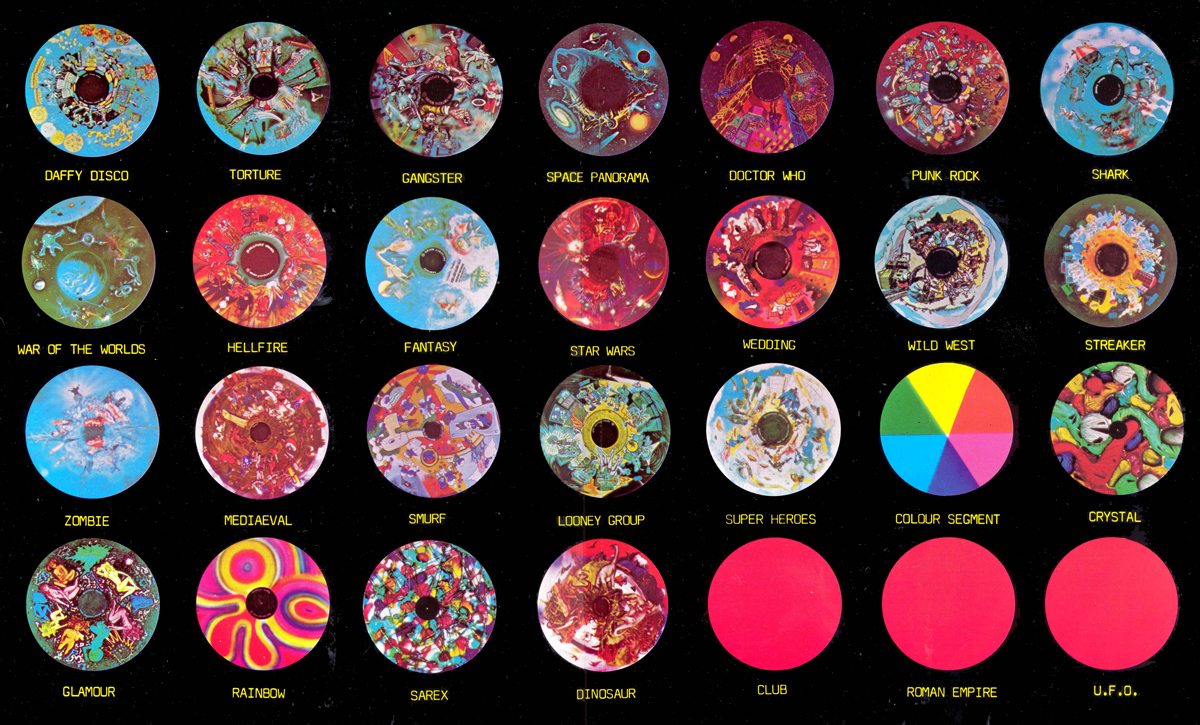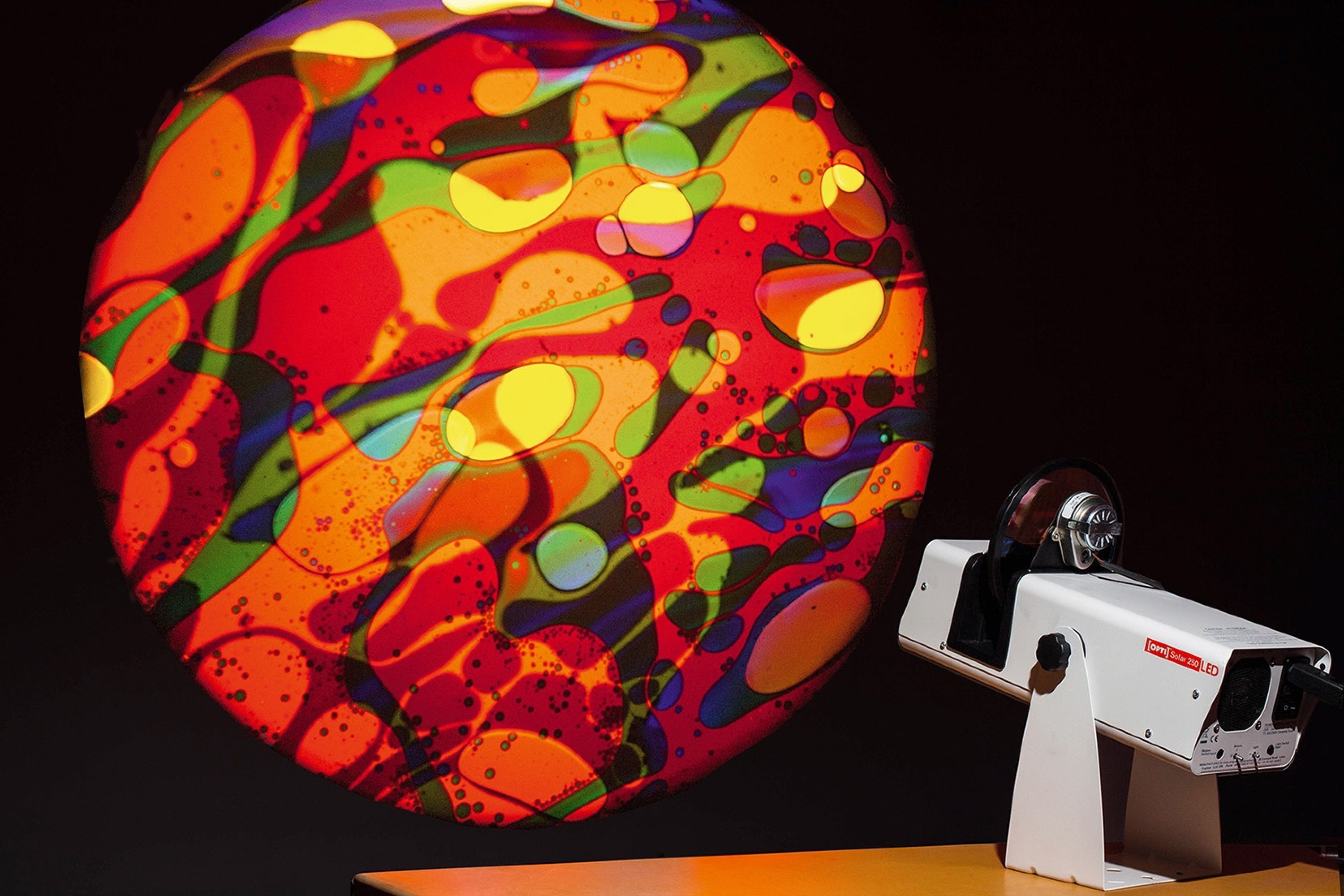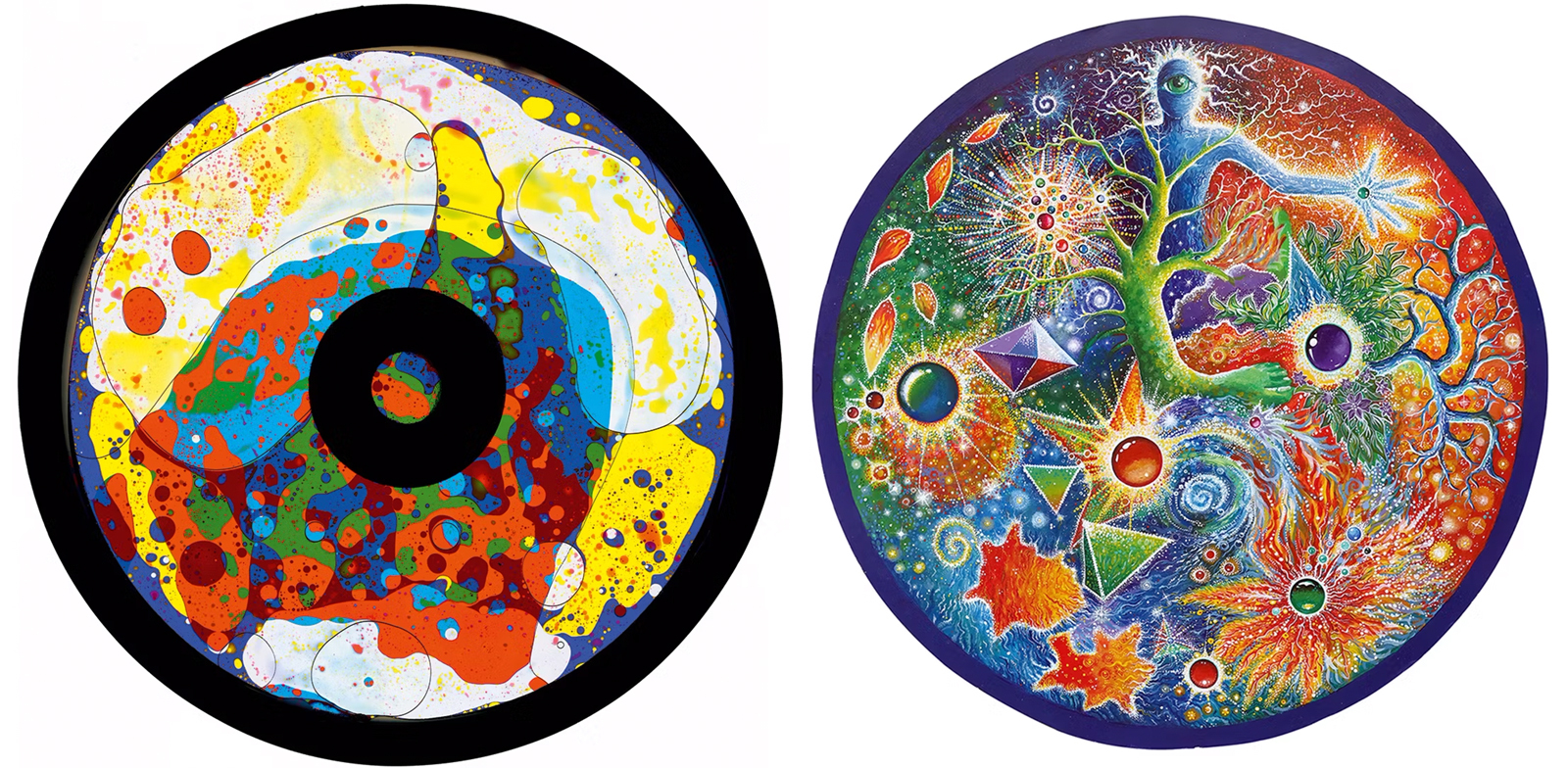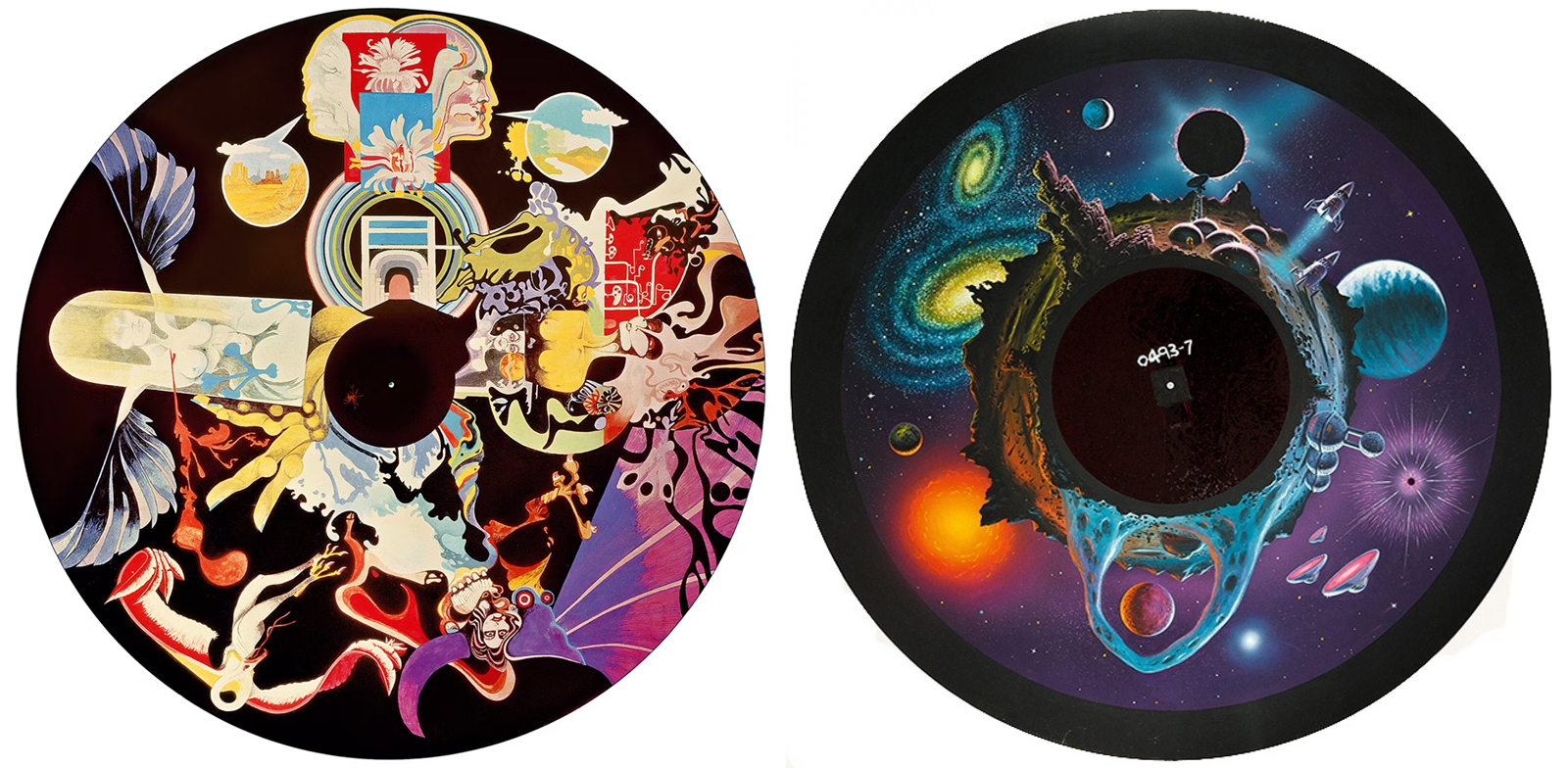Monday, 4:30pm
6 November 2023
The fantastic light trip
Wheels of Light: Designs for British Light Shows 1970-1990
Published by Four Corners, £14. Written by Kevin Foakes. Designed by John Morgan StudioKevin Foakes (aka DJ Food) uncovers a strange, bright corner of analogue audiovisual culture

Kevin Foakes’ Wheels of Light: Designs for British Light Shows 1970-1990 is book nine in Four Corners’ Irregulars series, intended to present ‘a visual history of modern British culture’, writes John L. Walters. The arcane tale begins in the 1960s, when artists and designers such as Mark Boyle (Boyle Family), Keith Albarn, Five Acre Lights and Barney Bubbles made shows that would accompany performances in venues such as UFO and Middle Earth in London.
As underground music became more visible (and profitable) a small number of entrepreneurs started supplying the demand for light shows at gigs and discos. The companies they started – Optikinetics, Pluto, Orion, Light Fantastic – and their visual archives are at the core of this book, drawing heavily on the collection and recollections of Optikinetics’ Neil Rice.
LED Optikinetic Solar 250 effects projector fitted with a liquid wheel.
Top. Wheels from the Orion Lightning catalogue, 1978.

Wheels of Light reproduces many examples of the wheels and ‘cassettes’ that held the visual content such companies sold to accompany their projection systems. A major part of the book is packed with a heady mix of circular artwork. Liquid wheels held coloured inks and oils that swirled when the projector lamp warmed them up. Cassettes produced moiré effects from two screenprinted glass discs – one moving.
The remaining circular artwork shown includes abstract patterns, sci-fi imagery (often kitsch), cartoons, photographs and illustrations (sometimes erotic) plus more kitsch. A page from a 1970s Optikinetics catalogue demonstrates the way different artworks can be combined: ‘Bubblelite + Liquid Wheel’; ‘Kaleidoscope Lens + Panorama Wheel Flesh’; and an Orion list included wheels titled ‘Daffy Disco’, ‘Doctor Who’ and ‘Punk Rock’.
Psychedelic light effects. Left. Cosmic Flare liquid wheel, Optikinetics. Right. Cosmic Trip by Jennie Caldwell, Hawkwind, 1990s.

Left. Acid, Light Fantastic Limited, 1970s. Right. Space Ritual by David A. Hardy, Optikinetics, 1970s.

Some artwork was made in-house, but the companies also visited diploma shows to scout for new talent. Artist David A. Hardy (above right) was commissioned to paint some of Optikinetics’ most popular wheels – detailed fantasies with parallels to sci-fi book covers of the time, and Roger Dean’s Yes LP covers.
The book also features trade ads and promotional material for both hardware and special effects. Foakes (aka DJ Food) writes that the Solar 250 – ‘the Technics 1210 of light show equipment’ – may have sold more than 100,000 units, with an average of five effects per projector.
The 1980s saw a decline in these companies’ fortunes. The book ends on a positive note at the time when rave culture prompted renewed interest in psychedelic lighting, and younger artists such as Jennie Caldwell (An Arc Lights) entered the scene.
Holographic-foiled cover of Wheels of Light: Designs for British Light Shows 1970-1990.

John L. Walters, editor of Eye, London
Eye is the world’s most beautiful and collectable graphic design journal, published for professional designers, students and anyone interested in critical, informed writing about graphic design and visual culture. It is available from all good design bookshops and online at the Eye shop, where you can buy subscriptions and single issues.
